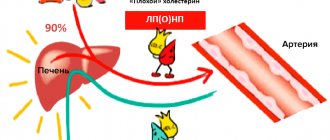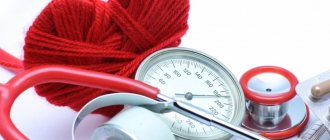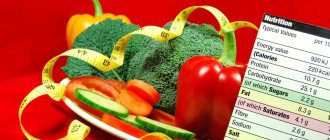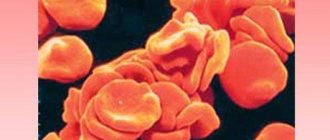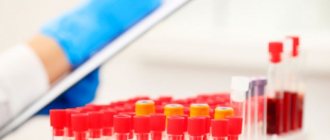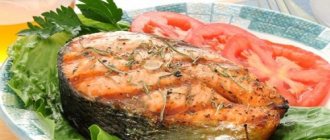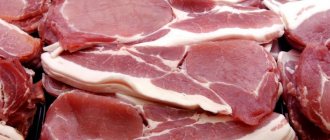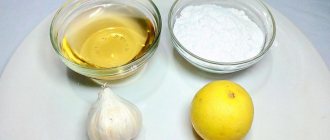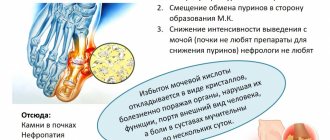Increased blood cholesterol is a problem that can lead to the development of atherosclerosis. That is why experts recommend minimizing products containing this lipoprotein compound. However, you shouldn’t completely abandon them - after all, they include both meat and eggs - irreplaceable sources of animal protein. But do not forget that you need to monitor your LDL levels. It should not be either too low or too high. We will talk about what foods contain cholesterol and how to avoid health problems associated with exceeding the norm in this article.
Our additional services: Bioimpedance | Marutaka Massage | Pressotherapy | Ion-Detox
Features of the diet for high cholesterol
You should adjust your diet, remove everything that increases cholesterol levels, and add those dishes that can improve blood composition.
Advice from doctors and nutritionists:
- combine diet with sports exercises;
- stop eating fatty foods;
- quit smoking;
- stop drinking alcohol;
- add eggs to dishes no more than twice a week;
- reduce the amount of sweets;
- avoid fast food;
- stop drinking carbonated drinks;
- Avoid canned and pickled foods.
Nutritionists recommend reducing the amount of cholesterol consumed to 250 mg per day.
For weight loss
In general, overweight people are more likely to have high cholesterol. Therefore, it is necessary not only to strictly follow the nutritional rules, but also to increase the number of sports activities. Experts repeatedly note that after such a diet, weight decreases. The menu should include more products that remove toxins from the body.
For men
It has been scientifically proven that high cholesterol is more common in men. It is recommended to reduce alcohol consumption, quit smoking, play sports, and move more. There is no need to completely remove foods containing fat; it contains vital elements.
Diet against cholesterol
What is atherosclerosis and why is it dangerous?
Today, cardiovascular diseases are the most common cause of disability and death in people of working age. The most common cause of circulatory diseases is damage to the walls of blood vessels due to atherosclerosis. When the blood vessels of the heart are damaged, patients suffer from severe chest pain - angina pectoris, which often ends in myocardial infarction, that is, death of the heart muscle. Atherosclerosis can affect the blood vessels that carry blood to the brain, then disorders develop, including stroke - the death of brain tissue. When the vessels carrying blood to the leg muscles are damaged, unbearable pain appears, the person cannot walk, and eventually gangrene develops.
There are two misconceptions about atherosclerosis. One thing is that in younger people, atherosclerosis is not coming soon. Another thing is that in the elderly, I still have atherosclerosis and it is useless to resist it.
Risk factors for cardiovascular disease
The results of large scientific epidemiological programs examining hundreds of thousands of people and monitoring them for decades have proven the existence of factors that significantly increase the likelihood of developing diseases associated with atherosclerosis at any age. They are called risk factors.
The most dangerous: high blood cholesterol, high blood pressure and smoking. As well as diabetes/high blood glucose levels and overweight – obesity. The effect of one factor enhances the effect of the other, so their combination is especially dangerous. If you reduce the level of each risk factor, for example, blood cholesterol, blood pressure, excess weight and quit smoking, then the overall likelihood of developing cardiovascular diseases will significantly decrease, and the development of atherosclerosis will slow down. Including by reducing blood cholesterol levels.
Two sides of the same cholesterol
Cholesterol is a fat-like substance that is vital for humans. It is part of the membranes of all cells of the body, bile acids necessary for digestion, and steroid hormones. There is a lot of cholesterol in nervous tissue. The liver produces more than enough cholesterol for all this need. But humans consume it with food and often in excess. The main source of cholesterol is fatty animal products. If there are a lot of them in the diet, and there are few cholesterol-free vegetable oils, grains, vegetables and fruits, then the cholesterol level in the blood increases, and it turns from a necessary friend for the body into a mortal enemy.
What are lipoproteins
Not all blood cholesterol is equally dangerous; they talk about “good” and “bad” cholesterol. As a substance, cholesterol is the same, but is found in the blood in different spherical particles - complexes with other fat and protein molecules, they are called lipoproteins. There are low-density lipoproteins that carry cholesterol in the blood to peripheral tissues from the liver, where it is synthesized. If too many of these particles are formed or their breakdown is impaired, excess cholesterol accumulates in the blood, it is deposited in the walls of blood vessels, and connective (scar) tissue grows around its deposits. This forms an atherosclerotic plaque, narrowing the lumen of the vessel and impeding blood flow. The cholesterol in low-density lipoproteins can be called “bad.”
There are different types of atherosclerotic plaques. The most malignant ones - with a large cholesterol core and a thin cap of connective tissue - are called unstable. Such a plaque ruptures easily and opens like an abscess into the lumen of the vessel. In response to this, the body tries to close the resulting damage with a blood clot. Often the thrombus cannot stop growing and, like a plug, blocks the entire lumen of the vessel. The blood flow stops, and the organ tissue dies without oxygen and nutrients. If this happens in the heart, then a myocardial infarction develops, if in the brain, a stroke develops. Such dangerous diseases are caused by elevated levels of cholesterol, which is found in low-density lipoproteins. That is why it is called “bad”. In a detailed laboratory analysis of blood lipids (fats and fat-like substances), this indicator is abbreviated as LDL cholesterol. But there are also “good” lipid-protein complexes in the blood. They are called high-density lipoproteins (HDL). HDL captures and removes cholesterol from where it accumulates in the walls of blood vessels. By “cleansing” blood vessels of excess cholesterol, HDL prevents the formation of atherosclerotic plaques.
The higher the level of LDL cholesterol (“bad” cholesterol) in the blood and the lower the level of HDL cholesterol (“good” cholesterol), the faster atherosclerosis will develop.
Cardiologists around the world believe that every person over 20 years of age should know their cholesterol level. Moreover, it is necessary to do a blood test for “good” and “bad” cholesterol, i.e. detailed lipid analysis. An increase in blood cholesterol is dangerous as a factor contributing to the development of atherosclerosis and severe cardiovascular diseases.
How to reduce bad cholesterol levels
Blood cholesterol levels can be reduced. To do this, you need to change your lifestyle:
- improve nutrition;
- stop smoking;
- move more.
Diet to lower cholesterol
- The basis of all cholesterol-lowering diets is to reduce the consumption of saturated (solid) fats, especially of animal origin (fatty meat, offal, butter, full-fat dairy products, baked goods, etc.) and replacing them with vegetable oils (sunflower, olive, corn) .
- Dairy products with reduced fat content, low-fat cheeses (no more than 30% fat), lean meat, baked goods with vegetable fats, fried fish, and potatoes fried only with vegetable fats are allowed in moderate (limited) quantities.
- Eggs can only be consumed boiled or fried in vegetable oil (omelet).
- More often use foods with reduced fat and cholesterol in your diet - wholemeal bread, whole grain bread, any cereals, pasta, low-fat dairy products, all kinds of vegetable dishes and fruits.
- Among meat products, you should prefer chicken, turkey, and veal. Remove fat and skin from poultry before cooking.
- Eat more fish, especially sea fish, you can introduce 2 fish days a week or eat one fish dish every day.
- Prefer desserts without fat, without cream, without sugar, preferably fruit ones.
- Regularly consume foods that lower cholesterol levels in the body and increase its elimination. They contain soluble fiber (pectin, psyllium, gluten) and form a jelly-like mass when cooked. These are oatmeal (rolled oats), apples, plums, and various berries.
- Eat legumes (beans, peas) regularly.
- When cooking, avoid frying in butter and animal fat. Cook, stew, bake more often. Use cookware with a special coating that does not require adding fat when cooking.
Recommendations for choosing food products:
| Types of products | Recommended | Consume in moderation | Exclude from food |
| Cereals | Whole grain bread, wholemeal bread, porridge, pasta | Fine flour bread | Butter bread |
| Soups | Vegetables | Fish | With meat broth |
| Dairy | Low-fat dairy products and cheeses | Half-fat dairy products and fats | Whole milk, cream, cheeses, fatty dairy products |
| Eggs | Egg white | Eggs | Scrambled eggs with animal fats |
| Seafood | Scallop, oysters | Mussels, crabs, lobsters | Squid, shrimp |
| Fish | All types, especially sea | Fried in vegetable oils, lightly salted | Fried in animal fats, hard margarines or unknown fats |
| Meat and poultry | Chicken, skinless turkey, veal, rabbit | Lean varieties of beef, lamb, ham; liver | Fatty meat, duck, goose, fatty sausages, pates |
| Fats | Vegetable liquid oils: sunflower, olive, soybean | Soft vegetable fat spreads containing no trans fats | Butter, meat fat, lard, hard margarines |
| Vegetables and fruits | Any fresh, frozen, steamed, boiled, legumes | Potatoes fried in vegetable oils | Potatoes and other vegetables fried in animal or unknown fats |
| Nuts | Almonds, walnuts | Peanuts, pistachios, hazelnuts | Coconut, salted |
| Dessert | NOT sweetened juices, fruit drinks, popsicles | Confectionery, baked goods, creams, ice cream with vegetable fats | Baked goods, sweets, creams, ice cream, cakes made with animal fats |
| Seasonings | Pepper, mustard, spices | Unsalted sauces | Mayonnaise, sour cream salted |
| Beverages | Tea, coffee, water, soft drinks | Alcoholic drinks – small/moderate amounts | Coffee or chocolate drinks with cream |
By carefully following the diet, you can reduce blood cholesterol by 10–12%. This diet not only lowers the level of “bad” cholesterol, but also increases the level of “good” cholesterol. If following a diet for 6–8 weeks does not lead to the desired reduction in the level of total blood cholesterol (less than 5 mmol/l) and LDL cholesterol (less than 3 mmol/l), and the risk of developing diseases caused by atherosclerosis remains high, then the doctor will recommend cholesterol-lowering medications. There are many such drugs now. The main thing is not to self-medicate after hearing enough advertisements about miraculous and safe food supplements. Among dietary supplements, only those that contain known food components that affect cholesterol, for example, soluble fiber preparations, can be effective. However, their effectiveness is no higher than a well-established diet; they only help its effect.
Of the medications used to lower blood cholesterol levels, statins are most often prescribed. These drugs, in normal doses, reduce cholesterol by 20–40%. Scientific studies have shown that statins also improve the course of diseases caused by atherosclerosis, reduce mortality from cardiovascular diseases and overall mortality. Using special studies of heart vessels, it was shown that treatment with statins slows the growth of atherosclerotic plaques and even causes them to shrink.
To give up smoking
It has been proven that active smoking by the smoker himself and passive smoking by others increases the risk of developing many serious diseases, primarily cancer and cardiovascular diseases. Tobacco smoke contains a wide range of substances that are toxic to many organs and tissues (nicotine, carbon monoxide, hydrogen cyanide, carcinogens). Thus, nicotine disrupts the tone of the vascular wall and contributes to its damage, spasms, and aggravates the formation of blood clots in blood vessels. Carbon monoxide, combining with hemoglobin, blocks the transfer of oxygen to organs and tissues. Components of tobacco smoke contribute to the development of arterial hypertension, a disruption in the system of cholesterol transfer into the walls of the vessel, exacerbating the deposition of cholesterol in them. This creates a high overall risk of developing cardiovascular diseases.
Sufficient physical activity
Sufficient physical activity is an integral part of a healthy lifestyle. The most accessible and fairly effective type of physical activity is brisk walking in the fresh air. You should exercise 5 times a week, for 30–45 minutes (up to 2 hours). The heart rate should reach 65–70% of that achieved at maximum exercise for a given age. The maximum heart rate for a particular person can be calculated using the formula: 220 – age in years. For example, for a practically healthy person of 50 years old, the maximum heart rate is 220–50 = 170 beats per minute, and the heart rate that is recommended to be achieved during training is 110–120 beats per minute.
Many people don't have enough time to exercise, so it's important to take advantage of every opportunity to move during and after the workday. For example, for workers in “sedentary” professions, it is recommended to stand up to make a phone call or throw trash in a basket, take the stairs instead of using the elevator, hold a short meeting while standing, etc. The results of large studies have shown that the combination of regular physical activity with a reduction in periods of prolonged sedentary work through short breaks makes a complementary significant contribution to the prevention of heart and vascular diseases.
In the presence of heart and vascular diseases, the physical activity regimen is selected by the doctor individually, strictly in accordance with the results of an electrocardiographic test with physical activity.
Fish oil for high cholesterol
Doctors recommend consuming fish oil during a diet with high blood cholesterol.
The positive effect of this folk remedy is scientifically confirmed by clinical studies. Fish oil contains fatty acids that prevent blood clots.
Recommendations for taking fish oil:
- capsules should be swallowed without disturbing their integrity;
- should not be consumed on an empty stomach;
- combine with meals;
- if the lipid level is high and low density, then 5 g of the product is needed per day;
- 3 g per day will be enough if the level is not critical;
- For prevention, 2 capsules are enough.
We must remember that fish oil alone will not help solve all problems with cholesterol; treatment and diet are necessary.
Before you start using fish oil, you should make sure that there are no contraindications to the use of this product.
You should avoid fish oil if you have the following reasons:
Harmful and good cholesterol in foods
Cholesterol or in other words cholesterol is an organic compound present in the cells of the body. Despite the fact that it is a natural fat, the substance is not soluble in water. Human blood contains lipoproteins, consisting of a complex of substances, including cholesterol and transporter proteins.
Of one hundred percent of the compounds found in the human body, eighty are produced by the gonads, liver, adrenal glands, kidneys and intestines, and only twenty percent come from food.
Cholesterol is an important component of the cell life cycle. It takes part in the production of estrogen, cortisol, testosterone and other steroid hormones. The body needs the compound to maintain the normal functioning of all organ systems and general immunity.
The effect of fiber on cholesterol
Fiber helps reduce cholesterol, so when dieting, you should eat more foods that contain a lot of it.
Fiber is found in the following products:
- wheat bran;
- cereals;
- nuts;
- sweet peppers, greens, lettuce, green beans, cabbage and other vegetables;
- berries: black currant, grapes, strawberries;
- apples;
- dried apricots;
- raisin.
By increasing the amount of fiber in your diet, you can significantly reduce cholesterol levels.
Polyphenols in berries and fruits for patients with atherosclerosis
Polyphenols are substances that help normalize lipoprotein levels. Polyphenols are found in berries and fruits.
The most beneficial substances are contained in the following products:
- pomegranate;
- blueberry;
- red grapes;
- cranberry;
- raspberries;
- apples.
Products containing polyphenols must be consumed regularly, only then can they normalize cholesterol levels.
In order to get the maximum amount of polyphenols from berries and fruits, you need to know how to eat and cook them correctly.
Rules of use:
- avoid heat treatment;
- eat fresh, unpeeled;
- do not add sugar to juices;
Products should be added to the menu regularly throughout the day. A person needs 100 mg of polyphenols per day.
Garlic for cholesterol
During a diet with high blood cholesterol, you should eat more garlic. The beneficial properties of the vegetable are known to many. Garlic can normalize cholesterol. Experts say that just 1-2 cloves of garlic in 30 days can lower cholesterol by up to 20%.
When heat treated, these healing properties of garlic disappear. If, due to the smell, it is not possible to eat garlic every day, you can prepare a vodka tincture.
Technology for preparing garlic tincture:
- Grind 100 g of garlic using a fine grater.
- Place in a glass jar or bottle.
- Pour in 0.5 liters of vodka and close.
- Infuse for 14 days at room temperature in a dark place.
- Shake the tincture once every 3 days.
- Strain.
The resulting product should be taken 30 drops in the evening. It is recommended to do this during dinner. The course of treatment lasts 2 months.
Traditional medicine offers an effective recipe for garlic and lemon.
Cooking technology:
- Chop 4 lemons, 4 heads of garlic.
- Place everything in a three-liter glass jar, fill with clean water.
- Place in the refrigerator for 3 days.
- Strain.
Drink 0.5 cups in the morning, at lunch, and in the evening. The course of treatment lasts 30-40 days. It is not recommended to increase the duration of the course, otherwise it will negatively affect the digestive system.
How to lower blood cholesterol
Based on the results of numerous medical studies, it has been confirmed that the substance can cause harm to health when plaques form on the vascular walls. This process increases the risk of thrombosis, myocardial infarction, stroke and other diseases. It is worth remembering that not only cholesterol is to blame for the development of these diseases, but also a wide range of factors affecting health.
The body produces it as a protective material. It is used to restore blood vessels and cells after damage or wear.
Excessively low levels of the substance in the blood also do not have a positive effect on the body. Therefore, in search of answers to the question of how to lower cholesterol, you should not resort to powerful medications and diets unless there is a direct need and a doctor’s recommendation. Only a qualified medical specialist, after examination and laboratory tests, can prescribe a competent course and the required dose of statins (medicines), which will only bring benefit to the body and not harm.
Controlling cholesterol levels in the blood
Before you start eating foods that lower cholesterol effectively and quickly, you should find out its level in the blood. People over forty years of age, with problems of excess weight and obesity, as well as those who have a predisposition to cardiovascular diseases should be especially careful about the process of level control. The measuring unit of a substance is millimoles per liter or mmol/l.
Magnesium for high cholesterol
It has been scientifically proven that eating foods that contain large amounts of magnesium lowers blood cholesterol.
Table of magnesium content in products, per 100 g:
| the product's name | amount, in mg |
| wheat bran | 590 |
| sesame | 540 |
| cocoa powder | 448 |
| sunflower seeds | 370 |
| coffee | 320 |
| chocolate | 300 |
| black caviar | 300 |
| cashew nuts | 270 |
| pine nuts | 270 |
| buckwheat | 258 |
| peanut | 210 |
| hazelnut | 160 |
| oat flakes | 160 |
| walnuts | 160 |
| rice | 140 |
| pearl barley | 130 |
| Red caviar | 129 |
| chickpeas | 126 |
In addition, magnesium is also found in other foods, for example, dates, cottage cheese, dried fruits, and potatoes. It is quite easy to provide the body with the necessary amount of magnesium.
For those who have high blood cholesterol, it is necessary to ensure that foods that contain magnesium are always present in their diet.
What foods contain cholesterol: what not to eat
To continuously monitor the level of a biological compound in the blood, it is necessary to adhere to a dietary diet and avoid products with a high content of this substance. It should be remembered that nutrition can both raise and lower cholesterol levels.
What foods raise cholesterol?
When drawing up a diet, it is necessary to remember that choleterol cannot be completely excluded from the diet, as it is important for vascular health. That is, the “bad” substance (LDL) can cause harm to the body, and the “good” substance (HDL) can minimize the risk of disease.
High levels of LDL contribute to the clogging of blood vessels with cholesterol plaques, forming a blood clot, which leads to a lack of nutrients in the heart. HDL, on the contrary, stimulates blood circulation and does not accumulate on the walls of blood vessels. That is why, when creating a diet, you should choose foods that contain “good” compounds.
High levels of harmful LDL are found in:
- Ready-to-eat food (dry rations).
- Fatty meats.
- Chicken eggs.
- High fat dairy products.
- Certain types of fish.
